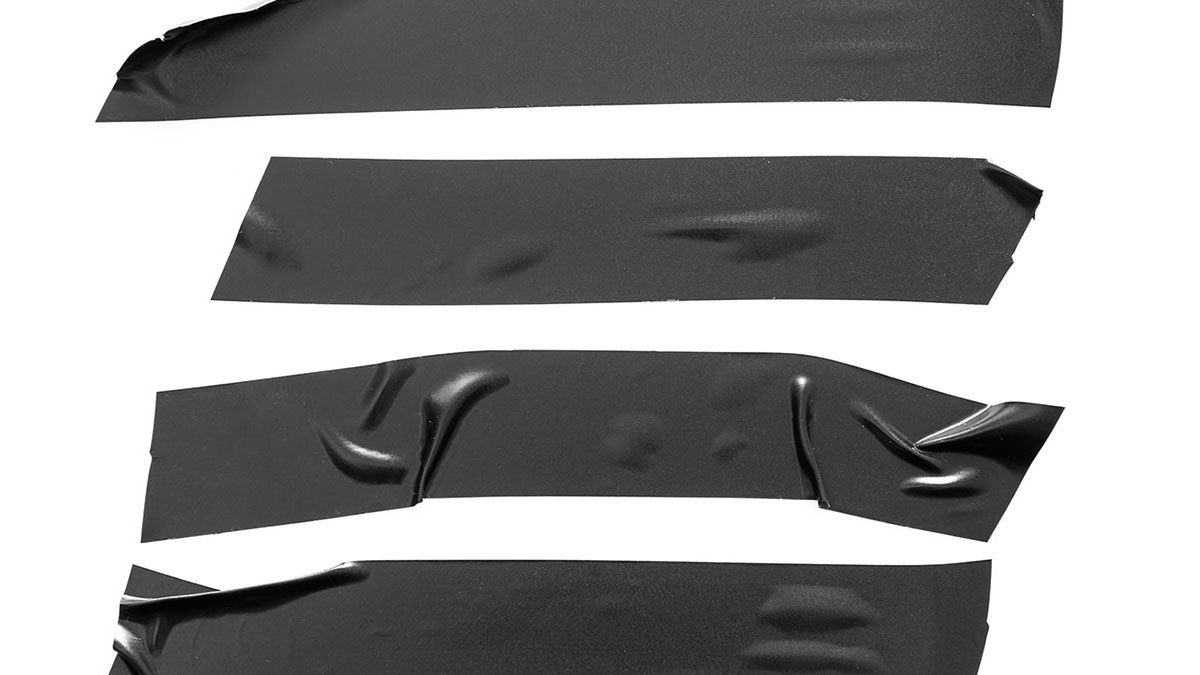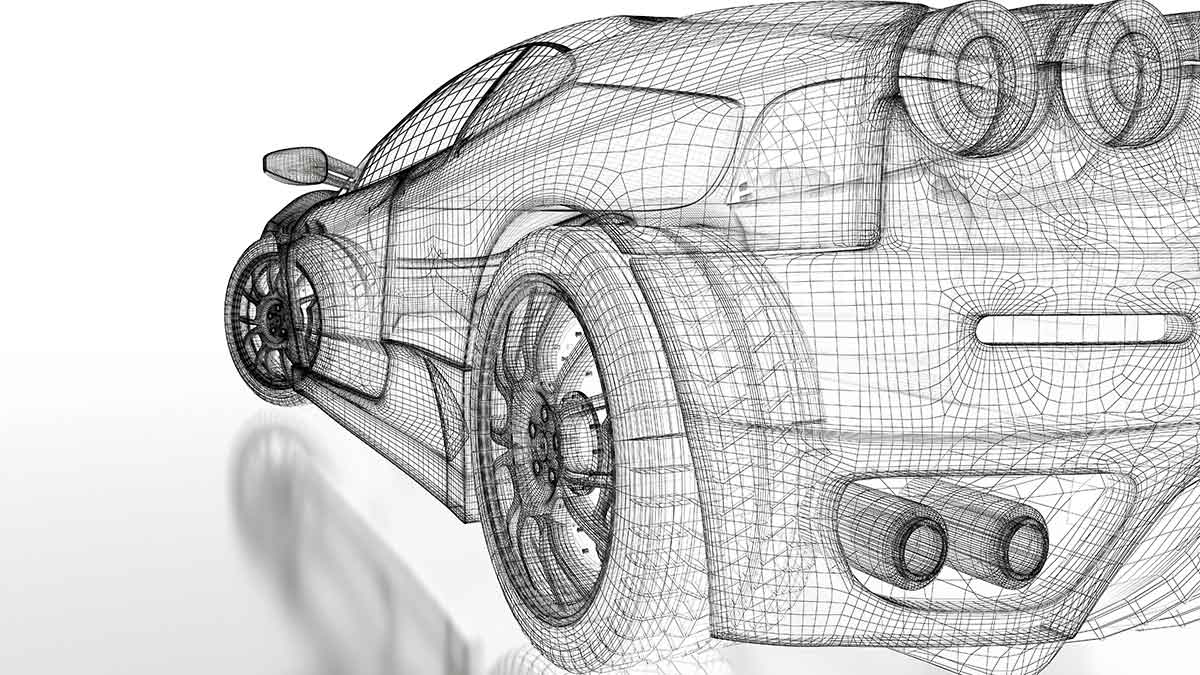Tape drawing is considered the medium of choice in the automotive design world. But how does this tool fit in environments that are embracing digital transformation? This crucial question concerns many design managers, so we invite you to explore the answer by reading this article.

© ooddysmile / stock.adobe.com
How tape is used in car design
Tape drawing is well-suited to large-scale designs where judging proportions and structural lines is critical. On 1:1 models, tape drawing exhibits unique characteristics, including:
- Outlining a model’s main curves early in the process to keep making progress with a solid basis.
- Overcoming the limitations of pencil drawing or sketching, as these mediums are not the best suited to create smooth curves or straight lines in a continuum.
- Offering flexibility because taping can be easily edited, undone, or reused while maintaining its integrity
Moreover, tape is not only used as a design technique but also as a communication tool. Tape allows team members to create and share precise adjustments using an easy-to-understand common language, that describes objects, surfaces and intentions.
Common problems in tape drawing
The vast majority of professionals involved in automotive design will agree that tape drawing is an incredibly useful technique. We could go as far as saying that it is the best we’ve had for a long time when it comes to defining design details in 3D models. But while tape has its place, it’s not without problems or potential for improvement.
One of the key issues is that this technique is partly losing its value in the increasingly digital context that surrounds design. Nowadays, digital transformation has a strong presence in different aspects of design. Such a substantial change is likely to impact the entire design process as well as the tools and techniques used within it.
Tape drawing was developed at a time when the design process was not computerized. Clay models were the state of the art at that time. They created the prerequisite for tape drawing ‘ but today, clay models are simply no longer up to date. New methods are needed so that models no longer have to be laboriously exported into digital software tools. When scanning taped 3D models, accuracy losses are possible and unfortunately, common. In addition, digitizing tape annotations can introduce errors which require backtracking in the process, with the subsequent efficiency losses this entails.
Another problem is the skill level required to master tape so it accurately conveys what it’s meant to. It can take years to develop the necessary expertise to use tape at a highly proficient level, to the point that some compare it to artistic expression. And then again, even with training and practice, some designers will be more adept than others using this two-handed technique effectively.
Tape drawing as a language?
The title of this blog post describes tape as a language, and that’s not by chance. As it happens with spoken language, not everyone has the same linguistic repertory or can accurately and vividly transmit ideas. If tape alone can’t get an important message across precisely, this has implications for corporate communication.
Lastly, there are practical problems involved in tape drawing. The physical and large scale nature of this technique complicates the information sharing process when teams work remotely or from different design studios.
In view of this, it’s not surprising that renowned designers like ex-Lamborghini’s Filippo Perini advocate for the full incorporation of digital design technologies. Next, we explore the role of tape drawing in this evolution from low or hybrid tech to high-tech solutions in line with the times.
Tape tool in flyingshapes
flyingshapes is a virtual reality modeling program created to elevate the digital design experience. Because we understand the practical and communicational value of tape drawing, we developed a virtual tape tool that replicates the traditional method.
Due to its intuitive nature, this tool has virtually no learning curve for those who are conversant with traditional tape drawing. Creating, sculpting and curating every line, angle, and accent is quick and easy.
The user friendliness of this virtual tool tackles potential reluctance from designers, who may not have the time or desire to learn complicated software tools. The flyingshapes tape tool relies on an interface that mimics the physical language of tape to a high degree. This means that design managers can use it to get everyone on the same page quickly.
Moreover, our virtual tape tool facilitates the concise depiction of ideas so they can be conveyed to all levels involved, including management. Smooth communication maximizes the time available, which benefits design managers whose priority is boosting efficiency.
In short, with the flyingshapes tape tool there’s no need to digitize taped clay models. Your team can jump straight into it with high fidelity and precision, and without worrying about losing accuracy when transferring results between mediums.
Virtual tape drawing for better workflow efficiency
Design managers put their skills and experience into optimizing every aspect and tool of the design process for better cost efficiency. Bringing a product into the market is costly, and so the need for constant time and resource maximization is one of the most challenging tasks of design managers.
Part of the challenge is finding the optimal way to work around design iterations, which are an integral part of the design workflow. Ideally, iterations should be minimized as much as reasonably possible. Yet a substantial part of the design process is bogged down by iteration work.
In automotive design, the creation, review, and iteration cycle repeats itself multiple times. The typical process can use more than 800 man-days from concept design to production readiness, and this high use of resources is partly due to workflow inefficiencies.
Efficient workflows are critical to excellence and ROI. This is why our tape drawing tool has been designed with workflow optimization in mind. With this tool, communication flows smoothly and everyone can use it regardless of their degree of specialization. Moreover, this is a flexible tool whose results can be modified with just a few gestures. The result is a dramatically reduced design workflow, which in some cases is nearly 80 % shorter.
Conclusion
Tape drawing is the medium of choice for many design teams, since it acts as a shared language that most designers understand. However, integrating tape drawing into digital process requires re-imagining this technique.
At flyingshapes we have re-engineered tape so it can be seamlessly incorporated into digital design processes. The results include a smooth turnaround of ideas, smooth communication, and improved operational efficiency with shorter workflows.


